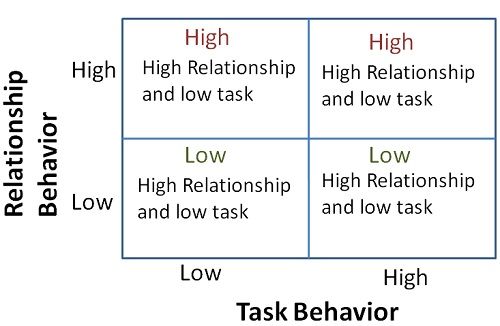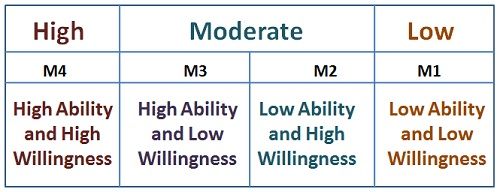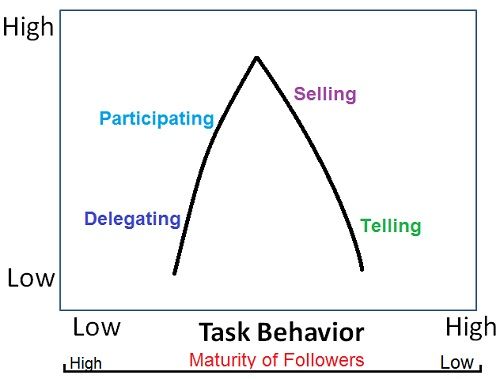Definition: Hursey and Blanchard’s Situational Model talks about the relationship between the leadership styles and the subordinate’s maturity. Here, the maturity means the ability and willingness of the subordinate directing his own behavior towards the job fulfillment.
Thus, following are the two main considerations in Hursey and Blanchard’s model:
- Leadership style
- Subordinate maturity
Leadership Style: According to Hursey and Blanchard the leadership style can be determined on the basis of two considerations, Viz. Relational Behavior and the Task behavior. The relational behavior refers to the interpersonal relationship between the leader and his subordinates, while the task behavior refers to the amount of guidance and direction a leader gives to his subordinates. On the basis of these considerations four types of leadership styles can be obtained, which are shown in the matrix below:
Subordinates Maturity: The maturity of subordinate refers to his ability and willingness to direct his behavior towards the accomplishment of the assigned task. Here the ability means the skills and knowledge that a subordinate possesses to do the job also called as the job maturity. While, the willingness refers to the psychological maturity that talks about the confidence and commitment of the individual.
These maturity variables are to be considered in relation to a specific job as these tend to change with the change in the job type. Combining these two maturity elements: ability and willingness, we get four combinations which are shown in the figure below:
Relationship between leadership style and maturity: studying about the appropriateness of leadership style with respect to the maturity stage of subordinate we get a relationship between these two as shown in the graph below:
On the basis of such relationship we get four types of leadership styles:
- Telling: Telling leadership style is adopted when the subordinate has a low ability and even is not willing to perform the task, then the leader is required to give the directions. Here, the leader follows the directive behavior that involves high task behavior and low relationship behavior.
- Selling: Selling leadership style is appropriate for subordinates with moderate maturity, who have high willingness but lacks the ability. Here the subordinate requires both supportive and directing behavior marked by high task and high relationship behavior.
- Participating: The participating leadership style is appropriate for the subordinates with moderate to high maturity, who have the ability to do but lacks willingness, and thus they require high external motivational force. Here, low task and high relationship behavior fit best.
- Delegating: Here, the subordinates have a high maturity, i.e. they have both the ability and willingness to work and require less leadership support. Low relationship and low task behavior is the best-suited leadership style in such a situation.
Thus, Hursey and Blanchard’s Situational Model talks about the relationship between the manager and the subordinates and the willingness of subordinates to direct their behavior towards the accomplishment of a task.




Esmaeel says
thanks a lot